Seville is a beautiful city, full of history and incredible architecture around every corner. And, luckily for tourists it’s very accessible and easy to explore on foot (and with little ones too) due to the lack of hills and an abundance of pedestrian friendly streets. But where to start your exploration?
We’ve come up with a simple route for a self guided Seville walking tour (just over 4.5 km/approx 3 miles) to take in some of the best this city has to offer.
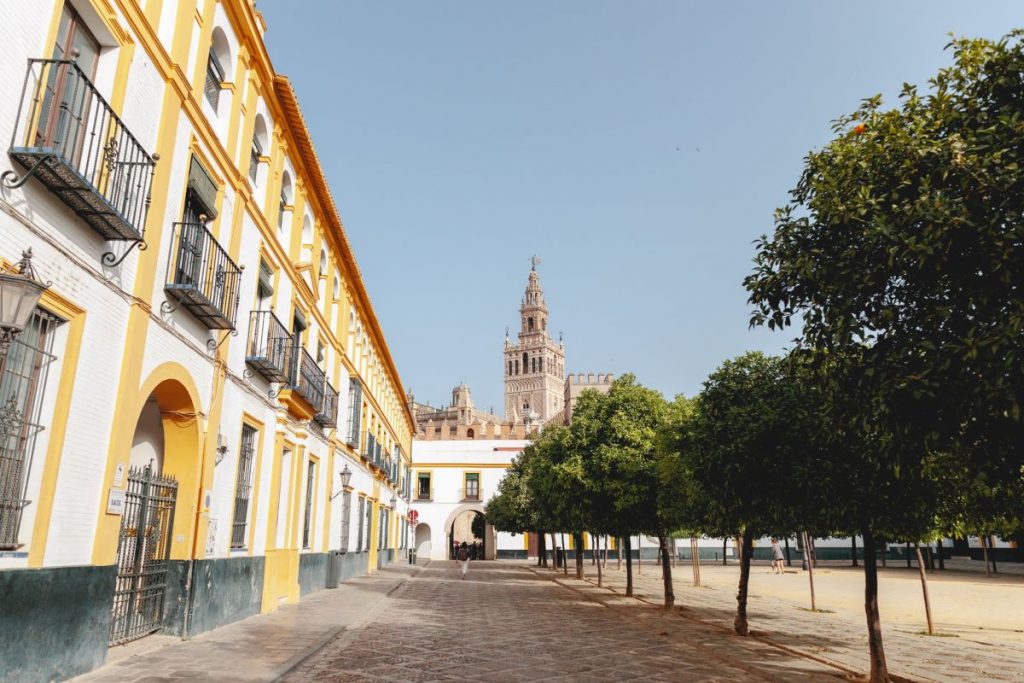
Starting point: Plaza de España and Parque María Luisa
Let’s kick off our our Seville walking tour at the gorgeous Plaza de España. Get there early to make the most of the serenity of the plaza before the crowds arrive, and use it as the golden opportunity to take some fantastic shots of the magnificent surroundings.
It was originally built in the 1920s to host the Ibero-American Exposition World fair. Around the base are beautiful tiled alcoves, each representing a different Spanish province. From here, you can explore the park it’s situated in. There are lots of hidden places to explore, and is a popular spot for brides and those celebrating their first communion to take photographs, and upon visiting, you will see why.
You may also recognise it from the silver screen. It features in Star Wars: Episode II Attack of the Clones as the exterior of the City of Theed on the planet Naboo, Lawrence of Arabia and it also features in the Netflix dark comedy series Kaos.
To get to stop one, head through the Prado de San Sebastián and cross over the road. Catch a glimpse of the Real Fabrica de Tabacos. Once a tobacco factory, made famous in the opera Carmen, it is now part of the University of Seville and it is available to visit.
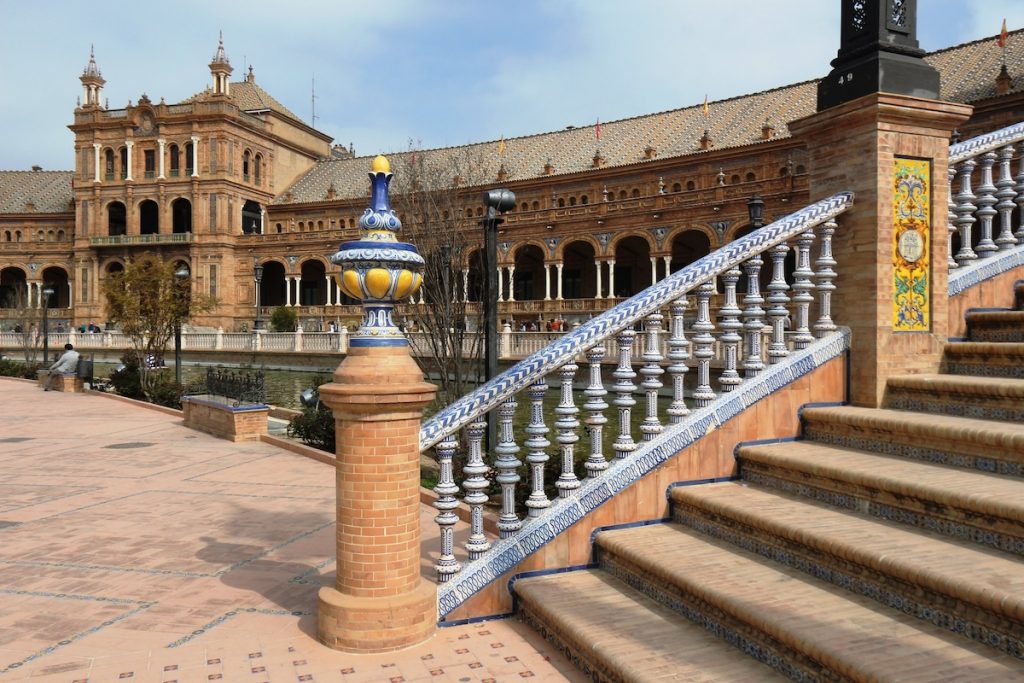
Stop one: Jardines de Murillo
Named after the painter Bartolomé Esteban Murillo and constructed in the early 20th century, his small park runs next to the Real Alcazar and marks the beginning of the Santa Cruz neighborhood. It is listed as a bien de interés cultural or an asset of cultural interest.
Dotted with benches, fountains and little corners to take a rest, it is the perfect way to skip some of the busier streets surrounding the Cathedral and enjoy some tranquillity in the city.
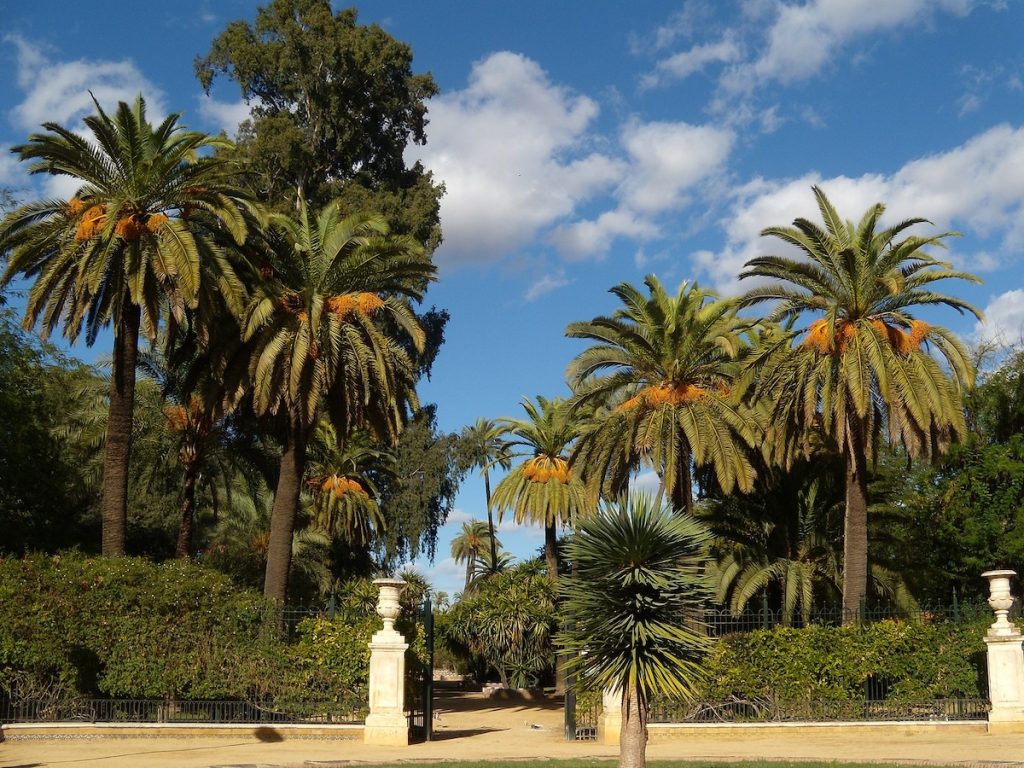
Stop two: Calle Santa Teresa
Head out of the gardens via Nicolas Antonio and make your way into the center party of city Santa Cruz which was formerly the Jewish quarter via Calle Santa Teresa. The narrow pedestrian streets are a hallmark of the old town and it is easy to get lost in the labyrinth of walkways. Grab a coffee and toast from our friends at Las Teresas or Placido and sit outside watch the streets fill up as the day begins.
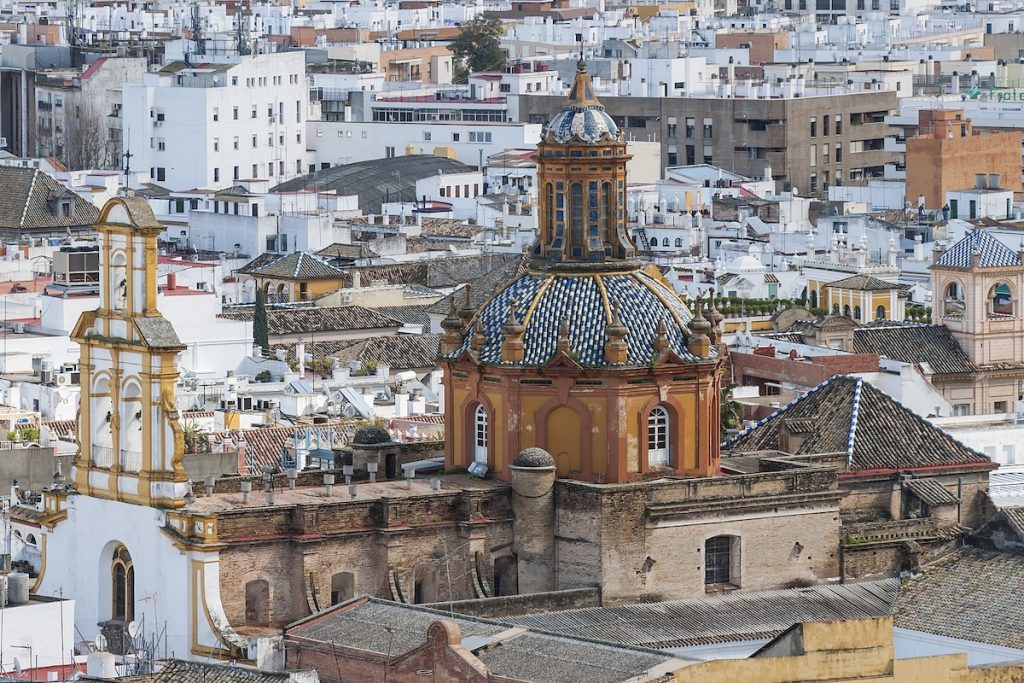
Stop three: Roman columns
Leaving Placido and heading down Meson del Moro, take a right up Mateos Gago and pause at the top to see the cathedral peaking over the buildings (to get the Cathedral take a walk down Mateos Gago, and maybe stop for a coffee or a bite at one of the many bars and restaurants on this pedestrianised street), then left onto Fabiola, before slighting left onto Aire, follow this delightful Callejon until you reach the Roman Columns on your right.
Local’s Tip: Try to sample some local cookies from the nearby Convento Madre de Dios, and see why many locals continue to buy from them to this day.
Stop four: Plaza Alfalfa
Head up Marmoles, take a right down Muñoz y Pabón. The street veers to the right before becoming Cabeza del Rey Don Pedro. Take an immediate left on to Candilejo, following the street until you hit a small plaza.
This is a well-shaded plaza in the centre of the old town with plenty of bars to choose from. The abundance of shade makes it a perfect spot to recharge and cool down in the warm spring and summer months. For those with kids, The playground here might be your best friend. Food highlights in this area include Catalina La Barra, Bodega de la Alfalfa, Sal Gorda, and Casa Monolo.
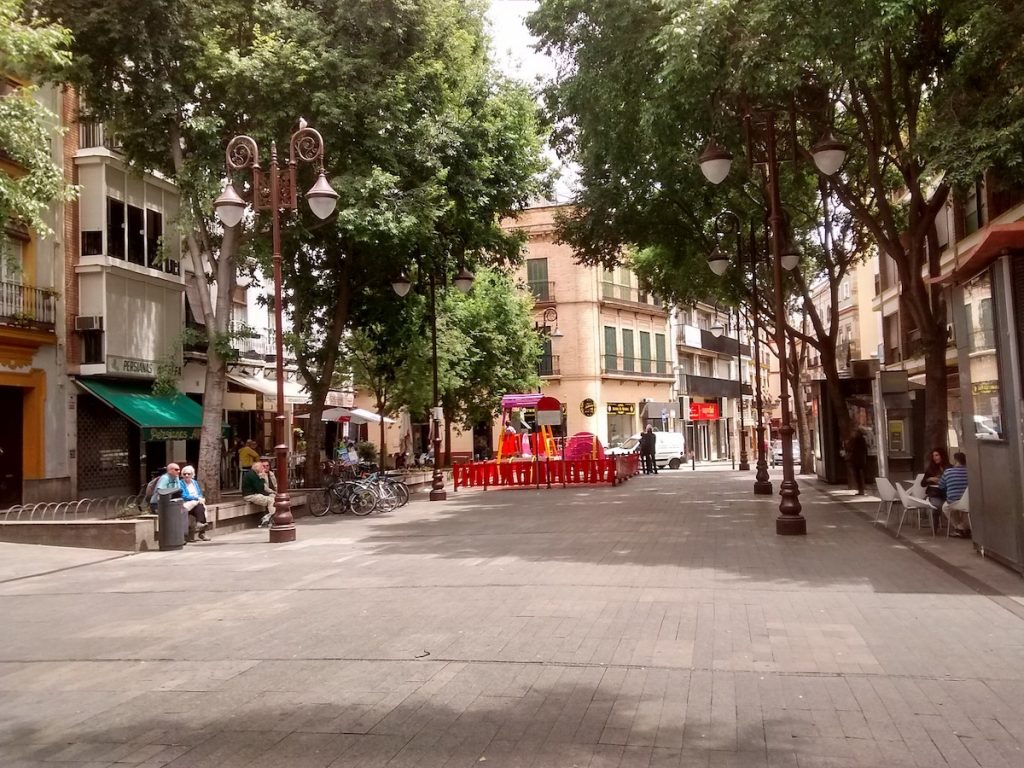
Stop Five: Plaza del Salvador
Leave Alfalfa via Alcaiceria de la Loza, turning left on Jesus de la Pasión, right on to Villegas, until you hit the plaza on your right. Home to not only the impressive Salvador church, (which was in fact one of Muslim Spain’s oldest and most important mosques after Cordoba and the interior still contains some of the elements from that original mosque) but also several local bars to grab another drink from and people watch.
Stop six: Metropol Parasol
Exit the plaza by heading down Calle Cuna, and do a bit of window shopping in this street known for its tailoring and sneak a look at the latest fashions in the world of brides, suiting, and flamenco dresses.
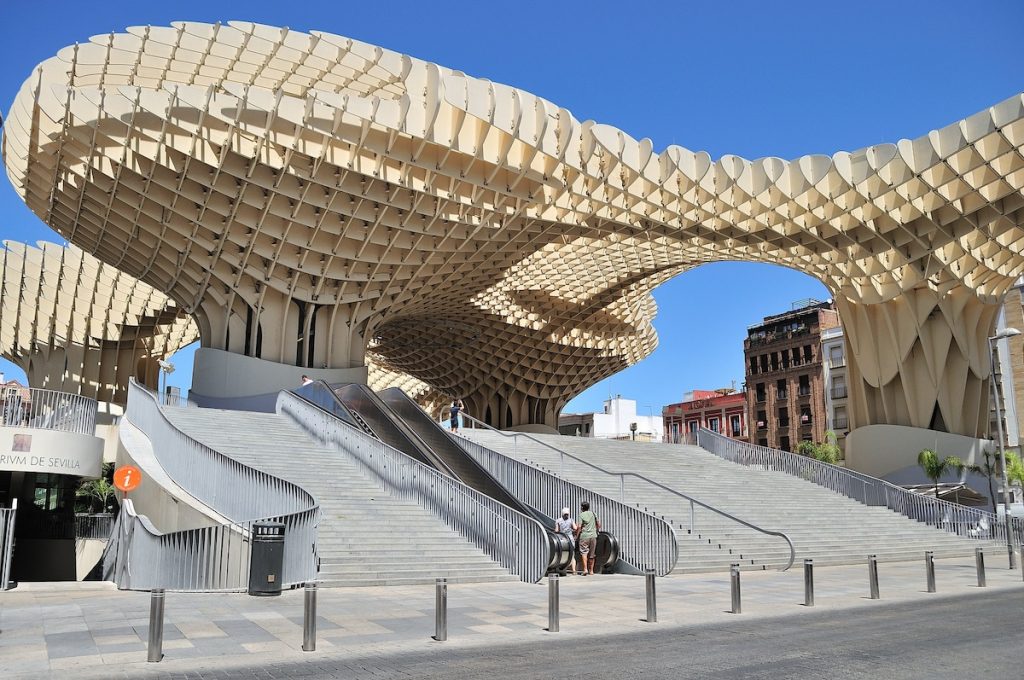
Bonus stop: Palacio de la Condesa de Lebrija
Towards the end of this street you’ll find the Palacio de la Condesa de Lebrija. This 16th Century palace is decorated with Roman mosaics and is a must see for any history buff with an interest in the classics.
At the end of the street take a right and walk up towards the Metropol Parasol, colloquially known to locals as Las Setas (the mushrooms). Designed by a German architect and now home to the central Mercado de la Encarnacion and designed to provide some much needed shade in the sunny months. Head upwards to take advantage of incredible panoramic views of the city, or head down the antiquarium below to see the ruins of Roman and muslim Seville.
Local’s Tip: Come back here about an hour before sunset, and take in the walkway as the sun sets on this truly magnificent city, and watch the buildings glow. We promise, these views are worth extending your Seville walking tour.
Stop seven: Iglesia Santa Catalina
Continue past The Setas along Imagen. Keep on the left hand side as the road snakes its way through the historic centre. Located on the former site of a Roman temple, Visigoth church, and then a mosque, the Iglesia Santa Catalina is one of Seville’s archdiocese’s jewels, known for its impressive mix of both gothic and mudejar architecture, perfectly encapsulated in its main doorway when opened.
Though home to hundreds of beautiful churches, trust us when we say you won’t regret going into Santa Catalina for some quiet reflection during your stay here. Take the opportunity to sit and relax in this area by visiting the folks at Los Claveles, home to some of the best cask wines and cold tapas in the city, with a history going back over a century.
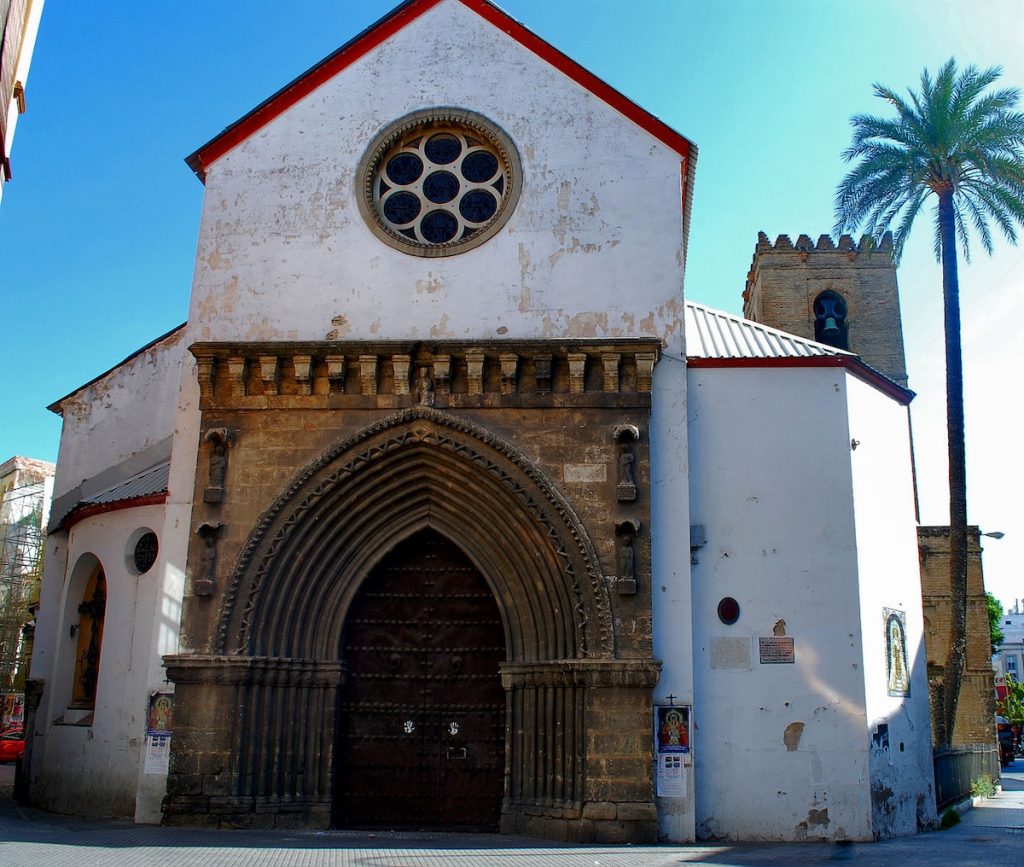
Stop eight: Plaza San Marcos
Now hopefully refuelled, take a left out of Clavales and head towards Bustos Tavera, a winding one way street that takes you a little off the beaten track, and very much into a more local, authentic neighbourhood within Seville’s old town. As the street opens up, the impressive tower of San Marcos greets the plaza which bears its name. Another example of gothic and mudejar architecture, San Marcos’ interior is known for its simplicity when compared to some of its contemporaries in the city.
Those keen on history will be interested to know that you are now walking on one of the most historically significant streets, with this area being a main point of entry to the town during both Roman and Islamic rule.
Final stop: Macarena
We reach the end of our Seville walking tour by continuing up San Luís until you hit the ancient doorway and old town wall that is also known as the Arco de la Macarena, which sits in the shadow of the Basilica itself. Home to one of the city’s most worshipped Virgins, known locally as La Macarena, there is simply no better way than to end your walking tour by visiting La Guapa (the beautiful one), and also learning more about one of Seville’s most revered festivals, Semana Santa.
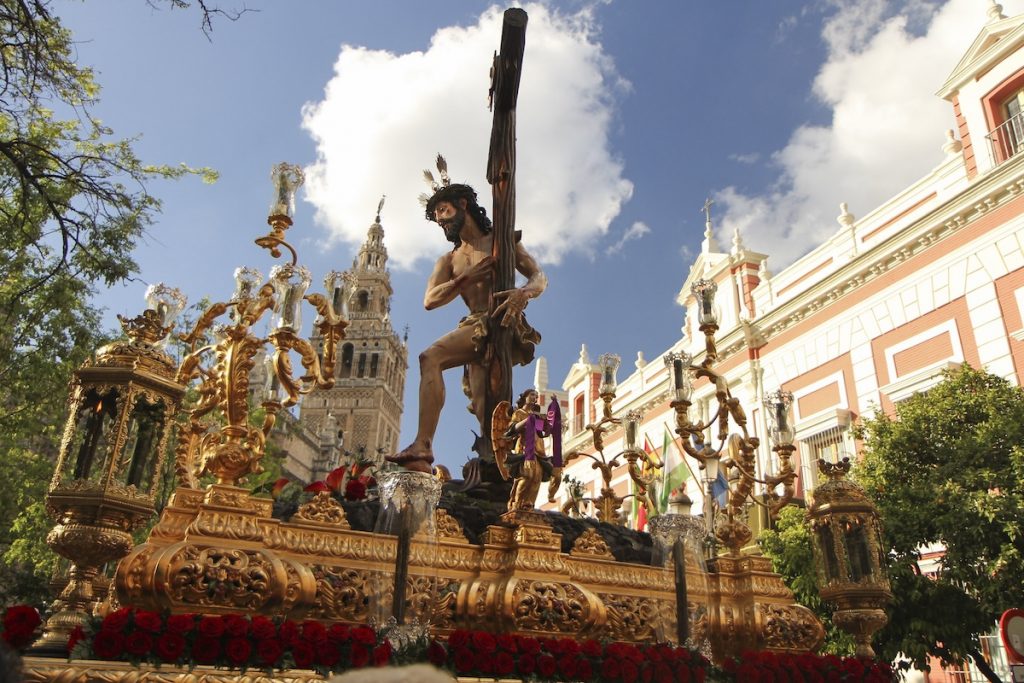
Next to the arch, you will find the old city walls, which you last saw in the Jardines de Murillo. Opposite this arch is an impressive building. Formerly the Hospital de las cinco Llagas (or Hospital of the Five Wounds), this is now home to the Andalusian Parliament.
Unsure on how to find your way back? Take the C1 bus from the stop just in front of the archway back to Prado de San Sebastian, effectively bringing you back to where our tour began. Or alternatively, continue your exploration by heading to Calle Feria and Feria market via Bécquer.
And that concludes our Seville walking tour!
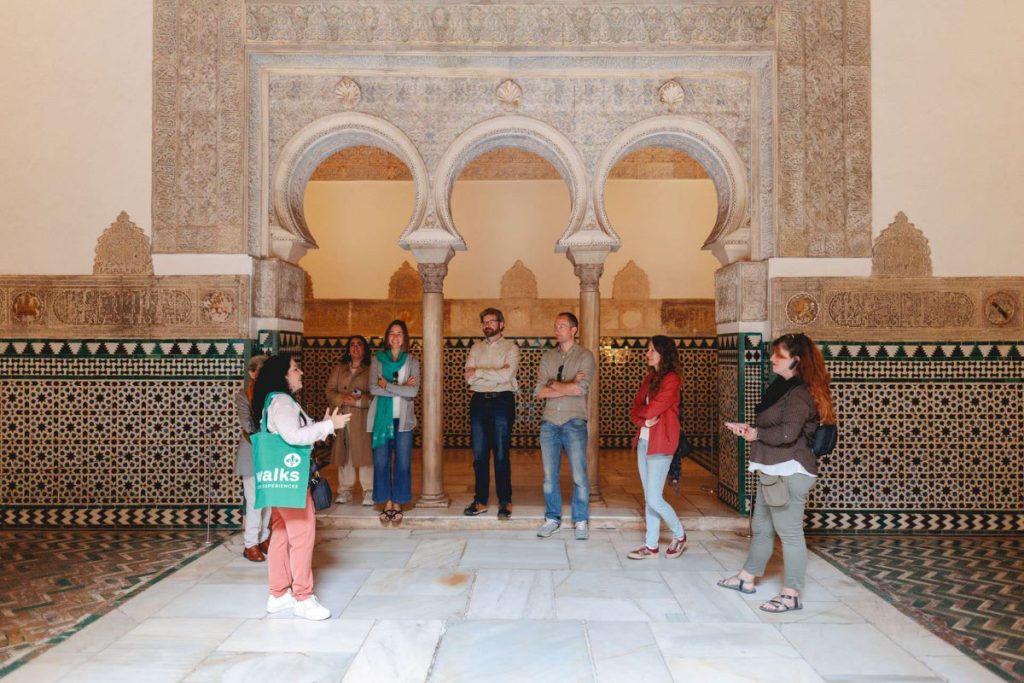
- The Best of Seville
- A marvelous evening of Tapas & Flamenco
- A delicious food tour covering the Tastes, Tapas & Traditions of Seville
- An extra special VIP experience like the Alone in the Alcazar: Exclusive Early Access Tour

